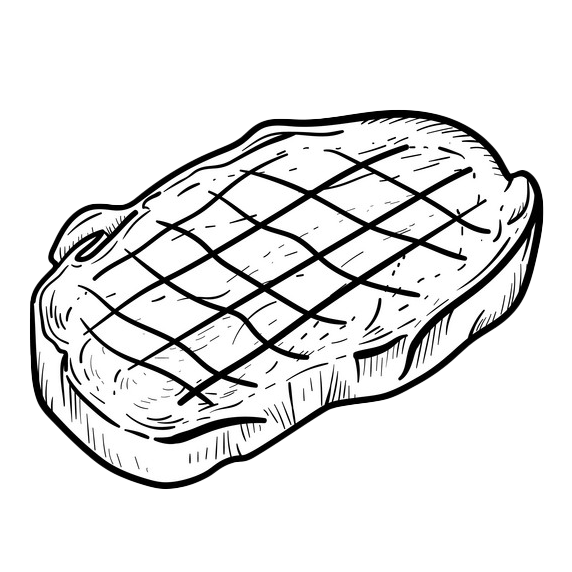Choosing the Right Oils
If you meander down the cooking oil aisle, you might be overwhelmed with all the options you’ll find — we’re not just cooking with generic vegetable oil anymore. Nowadays, different oils are being pressed from a variety of fruits, seeds, and nuts, and all these new oils have unique flavors, cooking temperatures, and health benefits.
With all these new options, what should a health-conscious home cook be using? Here’s a profile of seven different cooking oils to get you started thinking about what to choose for your needs.
Grapeseed Oil
Oil extracted from grape seeds is an excellent choice for sautéing over medium heat, due to its medium-high smoke point — 400°F. Avoid using grapeseed oil for frying at high heat. As far as health benefits go, grapeseed oil contains both omega-3 and omega-6 fatty acids. While omega-3’s are good for the heart, omega-6 fatty acids should be consumed in moderation, since there appears to be a link between high omega 6 consumption and an increased risk of inflammation, obesity, and high cholesterol levels. Interestingly, many cosmetics use grapeseed oil as a base due to the oil’s ideal thickness and rich amounts of Vitamins C, D, and E – all of which help reduce wrinkles and scars.
Sesame Oil
Pressed from toasted sesame seeds, sesame oil has a rich and nutty flavor, making it good for sauteing, grilling, and as a hefty ingredient in a salad dressing. Having said that, dark sesame oil has a lower smoke point and therefore is not a good choice for deep-frying or extended cooking. Sesame oil is rich in polyunsaturated and monounsaturated fats — the heart healthier fats — and low in saturated fats. Add it toward the end of cooking, or drizzle it over a cold noodle dish. If you start cooking with it too early, the taste and aroma will disappear.
Avocado Oil
For an oil that’s heart-healthy and great for cooking on high heat, pick up a bottle of avocado oil. This oil is made from the flesh of avocados and is filled with healthy monounsaturated fats and antioxidants. It has an extremely high smoke point — 500°F — making it a healthier way to fry or pan roast foods. In addition to cooking, avocado oil can be found as the base of many creams, moisturizers, and sunscreens. Thanks to its high content of vitamin E, potassium, and lecithin, it can nourish and moisturize the skin.
Almond Oil
Almond oil is a great option for baking or using in a saute or stir fry on low to medium heat. The cold-pressed oil is extracted from almonds, yielding a good supply of vitamin E (and antioxidant) and heart-healthy unsaturated fats. To preserve its nutty flavor, use it as a finishing oil like you would with sesame oil, or make a homemade dressing with it. Almond oil, like avocado and grapeseed, is often found in skin and hair care products.
Coconut Oil
Extracted from fresh coconut, this oil can be used in high heat since it has a high fat concentration. Coconut oil is also quite versatile, used for sauteing and stir-frying, for baked goods, and as a flavorful addition to soups and stews. It also works well in a variety of sauces, dressings, and marinades as well. Unlike some of the other oils listed above, coconut oil does contain saturated fats, and nutritionists generally agree that consumption of this oil should be limited. Coconut oil contains Vitamin E, essential amino acids, and lauric and caprylic acid. Coconut oil can also be used as a skin moisturizer, a sun protector, or a healthy hair product.
Canola Oil
Canola oil is one of the better oils for heart health, since it contains only 7 percent of saturated fat—the lowest of the most common oils available in the U.S. It is made from crushed canola seeds, has a light flavor, and a high smoke point, making it a kitchen-friendly and versatile cooking oil found in most pantries. Use it in stir fries, salad dressings, for deep frying, or while making baked goods.
Olive Oil
Before diving into olive oil, it’s important to note the difference between regular olive oil and extra virgin. Extra-virgin olive oil is made from cold-pressed olives, while regular olive oil is blended with cold-pressed and processed oils. Plain olive oil is best for general cooking and sautéing, whereas a nice extra-virgin olive oil is great as a finishing touch on food. While you can cook with both, extra virgin olive oil is deeper in flavor and more expensive, so it makes sense to preserve that flavor for dressings, dips, or to drizzle on a ready-to-eat meal. As for cooking temperatures, extra-virgin olive oil is best used uncooked or cooked at low to medium heat, while olive oil grade is great for higher-heat frying and sauteing. Both types of olive oil are also packed with fat-soluble vitamins A, D, E, and K, which could be beneficial for your health and your skin. Oils are wonderful tools for extracting, extending, and infusing flavors to foods. They (fats, oils) are thought to help deliver vitamins and minerals to us when used in preparing vegetables. It’s best to use oils sparingly, since they can add calories to meals (no need to soak every piece of ciabatta with olive oil, when just a touch will do). And avoid excessive pan frying and deep-frying, and instead saute and pan-roast --- both great methods of using oils smartly and sparingly in cooking. Use up oils in a reasonably short period of time, since they do eventually oxidize, and store them in a cool, dark place in your kitchen.
Hopefully this article has piqued your interest in trying a new, healthy oil that will add to your list of satisfying favorite meals!









